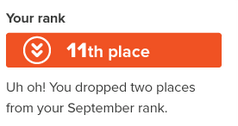Energy Data Fuels Innovation (Pun Intended)
 Smart meters provide consumers with granular data on how they are consuming energy — when is the meter spinning fastest, which appliances are the energy guzzlers, how much energy are those idling appliances consuming? Programs to increase consumer awareness and shift demand to off-peak times abound. I delay the start of my dishwasher to after 11pm here in France to take advantage of off-peak tariffs. Most consumers, however, are not highly motivated by just knowing their own consumption. Good news: Opower, a provider of really smart energy solutions, has cracked the code.
Smart meters provide consumers with granular data on how they are consuming energy — when is the meter spinning fastest, which appliances are the energy guzzlers, how much energy are those idling appliances consuming? Programs to increase consumer awareness and shift demand to off-peak times abound. I delay the start of my dishwasher to after 11pm here in France to take advantage of off-peak tariffs. Most consumers, however, are not highly motivated by just knowing their own consumption. Good news: Opower, a provider of really smart energy solutions, has cracked the code.
The Opower solution draws on a study of how messages influence consumption. Turns out, if you tell people that they will save money by turning off their air conditioning and turning on a fan during peak hours they likely won’t. Those are typically the times when it is really hot. Messages of “civic responsibility” and “saving the environment” also don’t really register. However, when consumers are told that 75% of their neighbors will turn off their air conditioning and turn on a fan, behavior changes. That message had a 6% drop in consumption. Opower now uses these types of comparisons in all of their offerings.
When people talk about big data in the energy space, most think about customer data — the information gathered from a smart meter. Opower goes well beyond that. They pull data from about 80 different sources, both internal and external to the utility — including data from the Department of Energy and the Energy Information Agency. Both organizations are part of the US federal government’s Energy Data Initiative, which provides data as “fuel to spur entrepreneurship, create value, and create jobs” (not sure if that pun was intended). But Opower doesn’t stop there; they incorporate energy use by home type and age, as well neighborhood and demographics. Opower also integrates with social networks so that consumers can compare to their friends.
 What resonates with consumers and drives changes in behavior is simple peer pressure. “Your neighbors use less energy.” “Those with the same income level consume less energy during peak times.” “Uh oh, you’ve dropped two places among your friends.” By combining consumption data with other open data sources — census data, parcel assessments, labor statistics — and social networks, Opower has created a compelling force for energy reduction and a valuable resource for utilities.
What resonates with consumers and drives changes in behavior is simple peer pressure. “Your neighbors use less energy.” “Those with the same income level consume less energy during peak times.” “Uh oh, you’ve dropped two places among your friends.” By combining consumption data with other open data sources — census data, parcel assessments, labor statistics — and social networks, Opower has created a compelling force for energy reduction and a valuable resource for utilities.

Many cities, states, and countries have energy reduction mandates. To meet those mandates, utilities recognize the need to engage customers. Not only for cost savings but also to better understand the customers themselves. Opower can help utilities understand which messages resonate with customers, and which customers are most responsive to the messages — helping the utility identify where to invest. Those customers who respond to personalized insight or who request an energy audit might also be interested in rebate programs for Wi-Fi thermostats or real-time rebates for reductions in peak consumption. Data might not be the "new oil," but it will certainly help use less of the oil we have.
My keynote at Forrester’s CIO Forum on May 6-7 in Washington DC and June 10-11 in London will provide more examples of how open data drives innovation and economic value. I look forward to continuing the discussion.